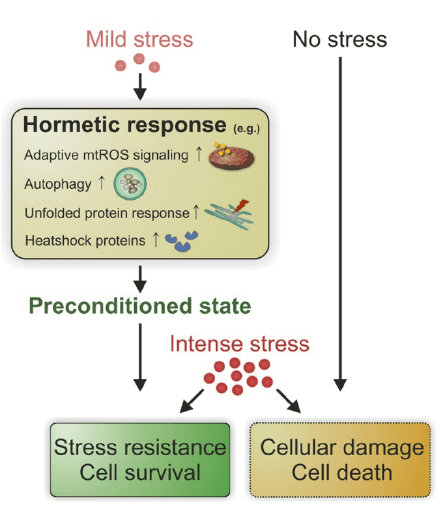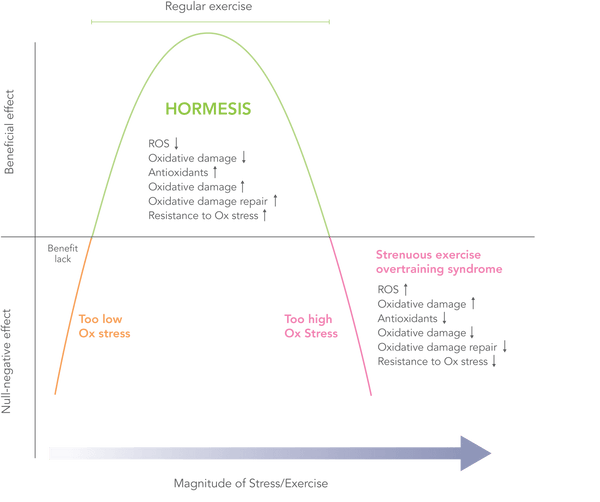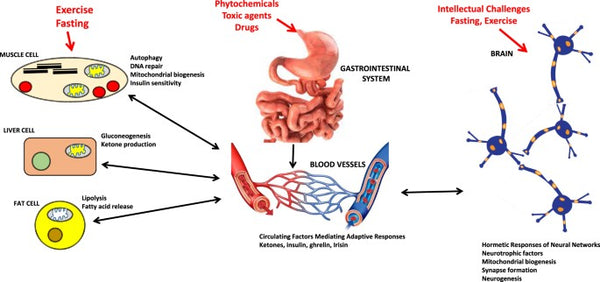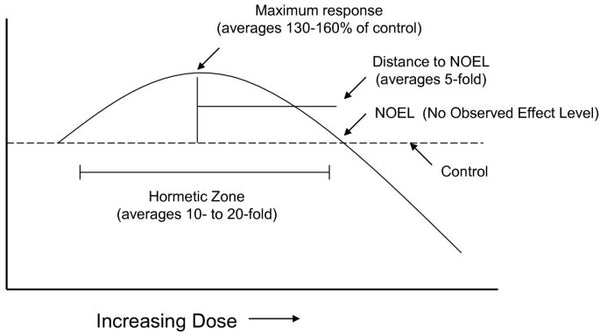Горезис - это термин, используемый в биологии и фармакологии для описания полезного эффекта низкой дозы токсина или стрессора. Гормотический ответ, как правило, является двухфазным, с низкими дозами стрессора, обладающим стимулирующим эффектом и высокими дозами, оказывающими ингибирующий эффект.
«То, что нас не убивает, делает нас сильнее».
- Фридрих Ницше
Горезис получен из греческого слова hórmēsis, что означает «быстрое движение» или «привести в движение». Впервые он был описан немецким фармакологом Уго Шульцем в 1888 году при проведении исследований на дрожжах. Он заметил, что, предрасполагая дрожжи на небольшое количество токсичных или ядовитых веществ, вместо того, чтобы убивать дрожжи, на самом деле заставили дрожжи расти быстрее. В научной литературе термин горезис Впервые был использован Саутэмом и Эрлихом в 1943 году в статье Исследование деревянных грибов.
Полезный фактор стресса или опыт eustress также описан в литературе как Гормотический стрессорПолем В целом, горезис означает биологический эффект некоторого фактора, вызывающего стресс в организме, где небольшое количество полезно и укрепляет организм, но большое количество почти токсично. Примеры гормотических стрессоров включают физическую тренировку, солнечную ванну, плавание под открытым небом, Растительные фитохимические, и Временное ограничение калорий.

Изображение: Горезис регулирует плейотропную программу про-выживания.
Источник: Zimmermann, A. & Bauer, M. & Kroemer, G. & Madeo, F. & Carmona-Gutierrez, D. (2014). Когда меньше больше: горезис против стресса и болезней. Микробная клетка 1 (5): 150–153.
Горезис представляет собой центральную эволюционную стратегию, которая ограничена индивидуальными биологическая устойчивость или пластичность. Эти интегративные и адаптивные ответы имеют сходные количественные особенности по видам, что делает его ключевым эволюционным фактором. Поэтому каждый организм способен Разумно определяя степень, в которой происходит биологическая производительность, и с другой стороны, стоимость таких повышенных результатов при любых обстоятельствах или ситуации.
Ответы на гормотические проблемы координируются в нескольких системах органов, включающих автономные молекулярные механизмы в клетках и сигналы, передаваемые между различными тканями. Упражнения и пост, например, придумывать биоэнергетические проблемы с несколькими системами органов, с реакцией мышц, печени, нейронных сетей и жировой ткани, которые особенно важны во время упражнений.
Механистически, гормезис, по -видимому, выполняется различными физиологическими клеточными процессами, которые в сотрудничестве Сходите на повышенную стресс -сопротивление и долговечность. Упражнения могут противодействовать старению в силу гормотической доза-реакции: отсутствие физической активности и перегрузки являются невыгодными, Но регулярные и умеренные физические упражнения полезны с помощью реактивных форм кислорода (АФК), опосредованного предварительным кондиционированием.

Изображение: Горезис и физические упражнения.
Источник: Pingitore, A. et al. (2015). Упражнения и окислительный стресс: потенциальные эффекты антиоксидантных диетических стратегий в спорте. Питание 31 (7–8): 916–922.
Модели на животных показали, что гормезис может возникнуть после острого повреждения или когда возникло начало хронического заболевания. Примерами для этого являются метаболические проблемы после инсульта в инсультах, инфаркте миокарда, травматических травм тканей и хирургии. Гормотические сигналы, исходящие от ткани под стрессом, могут быть переданы в отдаленные ткани, естественное явление, называемое «дистанционным кондиционированием», который помогает организму выжить в стрессовых и сложных ситуациях.

Изображение: примеры метаболического хомезиса в организме.
Источник: Calabrese, E. & Mattson, M. (2017). Как Hormesis влияет на биологию, токсикологию и медицину? Старение NPJ и механизмы заболевания 3 (1): 1–8.
Современная теория хормезиса основана на обзоре 2001 года о Токсикологические науки -Поджание, которое изучало влияние почти 700 различных химических веществ в организме. Исследование показало, что кривая доза-ответа показывает кривую U- или J-образную форму, в зависимости от количества дозы. Небольшие дозы были полезны, и чем выше эта доза, тем более токсичным стало вещество. Это наблюдение было подтверждено, изучая отношения дозы и ответа до 9000 различных веществ.
Горезис пренебрегал токсикологией в течение почти 70 лет, но в свете недавних исследований гормезис приобрел оценку более важным фактором, чем пороги ценности при объяснении последствий различных веществ.

Изображение: кривая отклика гормотической дозы.
Источник: Calabrese, V. & Cornelius, C. & Dinkova-Kostova, A. & Calabrese, E. & Mattson, M. (2010). Клеточные стресс -реакции, парадигма гомезии и витагены: новые мишени для терапевтического вмешательства при нейродегенеративных расстройствах. Антиоксиданты и окислительно -восстановительная передача сигналов 13 (11): 1763–1811.
///
Это выдержка из предстоящей книги «Устойчивое существо», которая является последующей деятельностью для справочника биогакера. Вы уже можете предварительно заказать книгу и поддерживать нашу работу!





